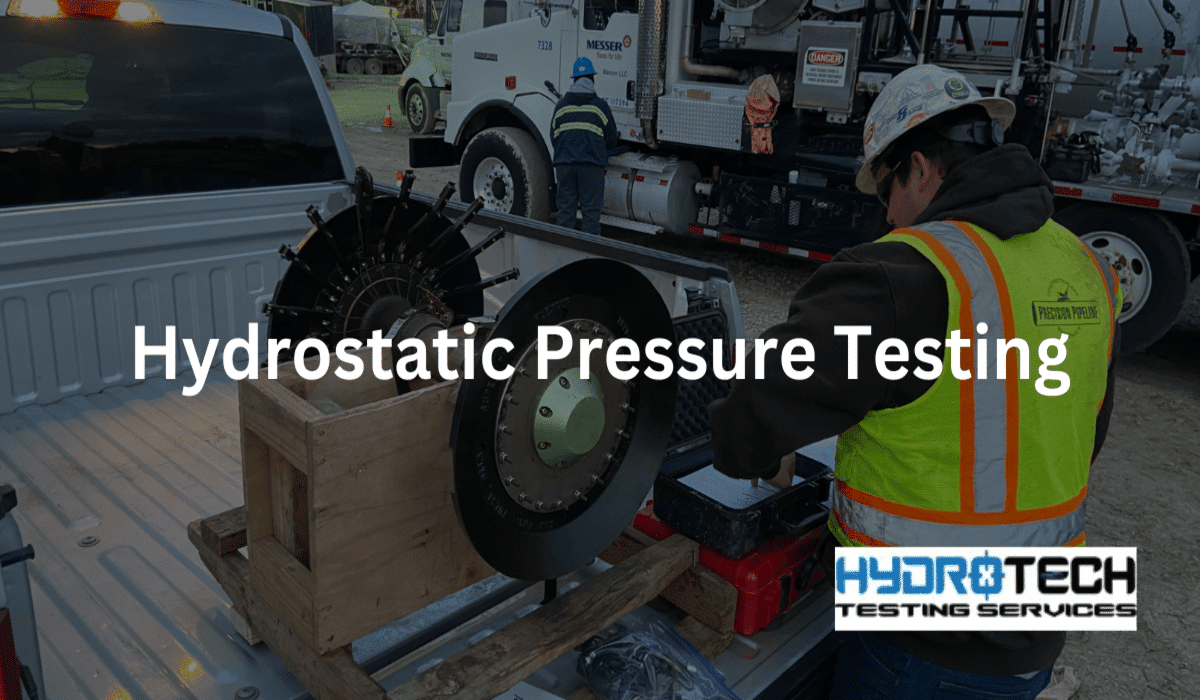Table of Contents
Hydrostatic pressure tests are an important part of ensuring safety and reliability in oil and gas pipelines. Standards and regulations require the use of hydrostatic pressure testing for the commissioning and recommissioning of pipelines, ensuring safety and efficiency for oil and gas Companies.
The Purpose of Hydrostatic Pressure Tests
Hydrostatic pressure testing is a process used to test the strength and integrity of pipes, vessels, and other components. The process uses water or other fluids to increase the pressure inside the component to its maximum working pressure.
The purpose of hydrostatic pressure tests is to ensure that there are no leaks or weaknesses in the structure or components being tested, and that they can withstand the pressures they may be exposed to in their operational environment.
How to do a Hydrostatic Pressure Test
Hydrostatic testing requirements
Pre-planning is important for hydro testing. Design temperature and design pressure limit must be taken into account. The testing methods, test temperatures, amount of time, and required water levels must also be determined and documented.
When conducting a hydrostatic pressure test, it is important to ensure that the pressure applied is sufficient to detect any leaks or weaknesses that may exist in the component or structure being tested. If the pressure applied is too low, then the test may not detect any existing issues.
Hydrostatic testing procedure
Testing is performed by applying a pressure source filling the piping system with water. IFor leak tests, fluorescent dyes are added to the water to make any leaks easier to spot. Once the system is filled with water, the pressure is then increased to the desired level. The pressure is then monitored over time to ensure that it does not drop.
The pressure in the pipeline should be above the maximum operating pressure, and must remain there for around 4 hours. If pipelines are unable to be visually inspected, pressure can be slightly reduced and must be held for 4 more hours.
Once the test is complete, a visual inspection of the system is done. This is done to identify any signs of leaks or defects. If any are found, the system is then repaired and the hydrostatic pressure test is repeated.
Hydrostatic Testing Standards and Regulations
Following regulations helps operators and manufacturers can ensure that their systems and materials are safe and reliable. They ensure the safety and reliability of the system or material, and to prevent damage or failure.
PHMSA
The PHMSA developed the Mega Rule, which requires hydrostatic pressure testing of pipelines and other pressure-bearing components. The Mega Rule also outlines the requirements for hydrostatic pressure testing, such as the minimum test pressure and the duration of the test.
ASME
The American Society of Mechanical Engineers (ASME) also has standards and regulations for hydrostatic pressure testing. The code outlines the requirements for hydrostatic pressure testing, such as the test pressure, the duration of the test, and the acceptance criteria.
Choose Hydrotech for your pressure testing needs
Hydrostatic pressure testing is cost-effective and reliable, but It is important to make sure that the testing process is performed correctly.
With Hydrotech, your hydrostatic pressure testing needs are in good hands. Using advanced equipment, our team of expert technicians and engineers will take care of every step in the hydro testing process. We guarantee compliance with all current standards and regulations, ensuring that your pipelines will be safe for use and remain profitable for your company. Check out https://hydrotechtesting.com/ or give us a call to explore the best hydrostatic testing services around.


